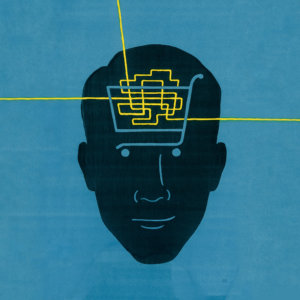Creating Digital Offerings Customers Will Buy
Find the sweet spot between what technologies can deliver and what your customers need.
Digital technologies are forcing companies to reimagine their customer value propositions. That’s because new social and mobile applications, analytics, the internet of things, artificial intelligence, biometrics, blockchain, cloud and edge computing, and many other advances allow them to deliver value in ways that simply were not possible in the past.
But given all that potential, how does any company figure out which offerings are viable? Digital technologies are game-changing — they provide ubiquitous data, unlimited connectivity, and massive processing power. Savvy companies are converting all this capacity into digital offerings: information-enriched solutions wrapped in seamless, personalized customer experiences. Think of Lyft: By using mobile and cloud computing to connect people seeking a ride with drivers who will get them to their destination, it is addressing pain points customers experience when they take cabs, like not knowing where the cab is and when it will arrive, how much the ride is going to cost, or what payment options they will have.
Successful digital offerings are created at the intersection of what technologies can deliver and what customers want and will pay for. That point of intersection, however, has proved to be elusive. To find it, companies must experiment repeatedly, cocreate with customers, and assemble cross-functional development teams — and the insights gleaned along the way must be shared internally.
In this article, we discuss how several of the nearly 200 companies we’ve studied have built and exercised these capabilities.1 We also take a close look at how one company, Schneider Electric, is using them to acquire and share customer insights.
A Constant Flow of Experiments
In our research, we have found that most big, established companies are not designed to deliver a continually evolving, innovative set of digital products and services. Their internal processes limit their ability to continually experiment with, learn from, discard, enhance, reconfigure, and scale up new ideas to provide new value propositions. Because developing that competence is difficult, it has become a differentiator for companies that figure it out.
Digital offerings are well suited to rapid test-and-learn iteration because they are software based: Software coders can develop a minimum viable product, release it to customers or a test group, and get immediate feedback. Based on the feedback, a company can quickly enhance or discard the product.
References
1. The authors’ case studies and survey reports on this topic are available as working papers from the MIT Sloan School of Management's Center for Information Systems Research (CISR), http://cisr.mit.edu.
2. P. Betancourt, J. Mooney, and J.W. Ross, “Digital Innovation at Toyota Motor North America: Revamping the Role of IT,” working paper 403, MIT CISR, Cambridge, Massachusetts, September 2015.
3. S.K. Sia, C. Soh, and P. Weill, “How DBS Bank Pursued a Digital Business Strategy,” MIS Quarterly Executive 15, no. 2 (June 2016): 105-121.
4. G. Platt, “World’s Best Bank Awards 2018: DBS Named Best Bank in the World,” Global Finance 32, no. 9 (October 2018).
5. L. Lorenzetti, “Royal Philips Is Headed for a Breakup,” Sept. 23, 2014, www.fortune.com.
6. M. Mocker and J.W. Ross, “ING Direct Spain: Managing Increasing Complexity While Offering Simplicity,” working paper 390, MIT CISR, Cambridge, Massachusetts, June 2013.
7. J.W. Ross, C.M. Beath, and K. Moloney, “Schneider Electric: Connectivity Inspires a Digital Transformation,” working paper 417, MIT CISR, Cambridge, Massachusetts, May 2017.


Comment (1)
Abhilash Pazhery